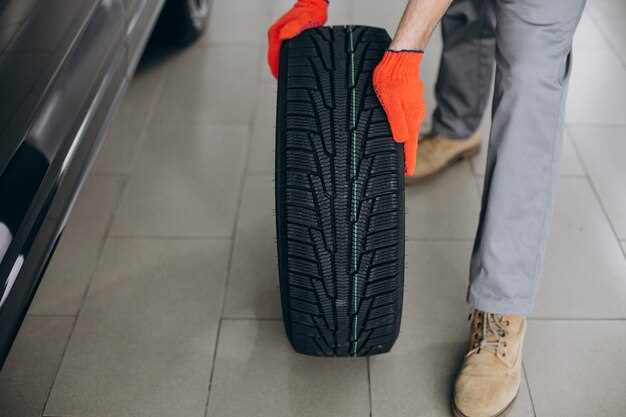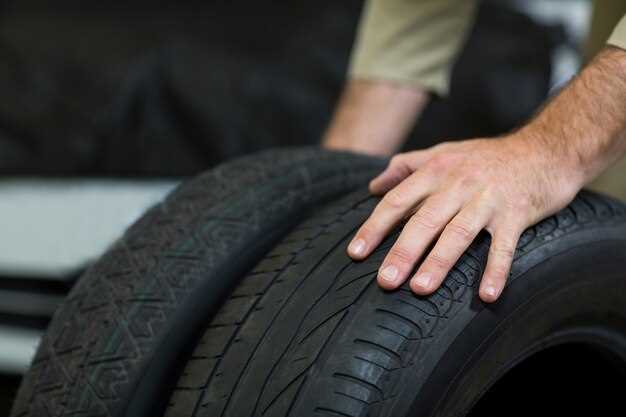
When it comes to enhancing your truck’s performance, choosing the right all-terrain tires is essential. All-terrain tires are specifically designed to tackle a variety of surfaces, from rugged off-road trails to smooth highways. With countless options available, finding the best tires that offer durability, traction, and comfort can be overwhelming. This article will guide you through a selection of top-rated all-terrain tires that you can trust for your truck.
Investing in quality all-terrain tires not only improves your truck’s capabilities but also significantly impacts your safety and driving experience. The ideal all-terrain tire should strike a balance between off-road performance and on-road stability. This balance ensures that you can confidently navigate diverse environments, whether you’re hauling heavy loads or exploring unpaved paths.
In this comprehensive guide, we will evaluate the best all-terrain tires on the market, focusing on factors such as tread design, material quality, and customer satisfaction. By the end of this article, you will be well-equipped to make an informed decision, ensuring your truck is ready to face any terrain with reliability and ease.
Choosing the Right All-Terrain Tire for Your Truck’s Needs

Selecting the appropriate all-terrain tire for your truck involves several key considerations that impact performance, safety, and overall driving experience. Here are the critical factors to evaluate:
- Driving Conditions:
Consider the primary environments where you will drive your truck. Do you encounter mud, sand, rocky paths, or snow? Each terrain demands specific tread patterns and tire features. For instance:
- Mud: Opt for tires with deep, aggressive treads.
- Sand: Choose tires that are wider to prevent sinking.
- Rocky Terrain: Look for reinforced sidewalls for added protection.
- Snow: Select tires designed for winter conditions with optimal grip.
- Tread Design:
The tread pattern plays a vital role in traction and handling. Consider the following types:
- Symmetrical Tread: Improves stability and provides even wear.
- Directional Tread: Enhances handling in wet conditions.
- Open Tread Design: Ideal for off-road traction, providing better self-cleaning capabilities.
- Tire Size:
Ensure the tire size matches your truck’s specifications. Considerations include:
- Aspect ratio, width, and diameter.
- Clearance issues to prevent rubbing on the suspension.
- Load ratings for hauling and towing capabilities.
- Durability:
Check the tire’s construction materials and design to ensure it can withstand rugged conditions. Look for:
- Reinforced sidewalls for puncture resistance.
- Durable tread compounds that resist wear and tear.
- Noise Levels:
All-terrain tires can be noisy at highway speeds. Balance your need for off-road capability with acceptable road noise for your typical driving. Review user reviews and tire tests for noise ratings.
- Price vs. Performance:
All-terrain tires come at varying price points. Assess:
- Budget constraints versus the intended use of the truck.
- Long-term reliability and warranties offered by manufacturers.
In conclusion, understanding your specific needs and evaluating these factors will help you choose the right all-terrain tire that enhances your truck’s performance across various terrains while ensuring safety and comfort.
Comparing Performance: Tread Patterns and Durability of Popular Models

When selecting all-terrain tires for trucks, understanding the intricacies of tread patterns and their durability is essential for maximizing performance. Different tread designs cater to various driving conditions, including mud, snow, and rocky terrains. This section examines how popular all-terrain tire models compare in these vital areas.
Tread Patterns play a critical role in determining a tire’s grip and handling. Tires such as the BFGoodrich All-Terrain T/A KO2 feature an aggressive tread pattern with large, interlocking lugs. This design enhances traction in off-road conditions, providing better performance on loose surfaces while maintaining stability on highways. Conversely, the Goodyear Wrangler Duratrac offers a unique mix of aggressive tread with tighter spacing, which optimizes performance in both on-road and off-road settings, allowing for excellent mud evacuation and enhanced highway comfort.
Another prominent model, the Michelin LTX A/T2, features a more refined tread pattern aimed at improving road noise and comfort during highway driving. Although its off-road capabilities are commendable, they are more subdued compared to the rugged options. Thus, depending on the primary use of the vehicle, the choice of tread pattern can significantly affect driving experience and performance metrics.
Durability is equally important when assessing all-terrain tires, particularly for trucks used in demanding environments. Tires like the Nitto Terra Grappler G2 are designed with robust sidewalls, designed to resist punctures and abrasions, making them ideal for rocky terrains. Their dual tread design allows for long-lasting performance, effectively balancing off-road traction with on-road stability.
On the other hand, the Toyo Open Country A/T III is engineered with advanced rubber compounds that improve wear resistance, ensuring longevity and consistent performance over time. Over rough surfaces, the tires exhibit impressive durability, appealing to those who regularly venture off the beaten path.
In summary, when comparing the performance of all-terrain tires, tread patterns crucially influence traction, handling, and overall driving comfort. Likewise, durability dictates the longevity and reliability of a tire under various conditions. Selecting a tire that best suits the intended usage scenario will enhance both safety and performance for truck owners.
Maintenance Tips to Extend the Life of Your All-Terrain Tires
All-terrain tires are designed to handle a variety of surfaces, but proper maintenance is essential to ensure their longevity and performance. Here are critical tips to help you extend the life of your all-terrain tires.
1. Regular Tire Rotation
Rotate your tires every 5,000 to 7,500 miles to promote even wear. Uneven tire wear can lead to decreased traction and handling, particularly in challenging off-road conditions.
2. Maintain Proper Tire Pressure
Check tire pressure at least once a month and before long trips. Under-inflated or over-inflated tires can lead to premature wear and reduced performance. Refer to your vehicle’s manual for the recommended pressure levels.
3. Inspect for Damage
Regularly inspect your tires for signs of damage, including cuts, punctures, and cracks. Address any issues immediately to prevent further damage and ensure safe driving.
4. Monitor Tread Depth
Keep an eye on the tread depth, as adequate tread is crucial for traction. Use a tread depth gauge to check wear. If the tread is less than 3/32 of an inch, it may be time to replace the tires.
5. Clean Tires Regularly
Wash your tires regularly to remove dirt, mud, and debris. This helps prevent corrosion and buildup that can damage the rubber over time. Pay attention to the sidewalls and tread grooves.
6. Align and Balance Your Wheels
Get your wheels aligned and balanced as needed. Misalignment can cause uneven wear and affect handling, especially when driving on various terrains. Typically, check alignment every 6,000 miles or if you notice abnormal tire wear.
7. Avoid Excessive Load
Follow your vehicle’s load capacity guidelines. Overloading your truck can lead to increased tire wear and potential blowouts. Be mindful of weight limits, especially when off-roading.
8. Drive Accordingly
Adapt your driving style to the terrain. Sudden accelerations, hard turns, and aggressive braking on uneven surfaces can increase wear. Practice smooth driving to minimize stress on your all-terrain tires.
By following these maintenance tips, you can significantly extend the life of your all-terrain tires, ensuring they perform well in both on-road and off-road conditions.



